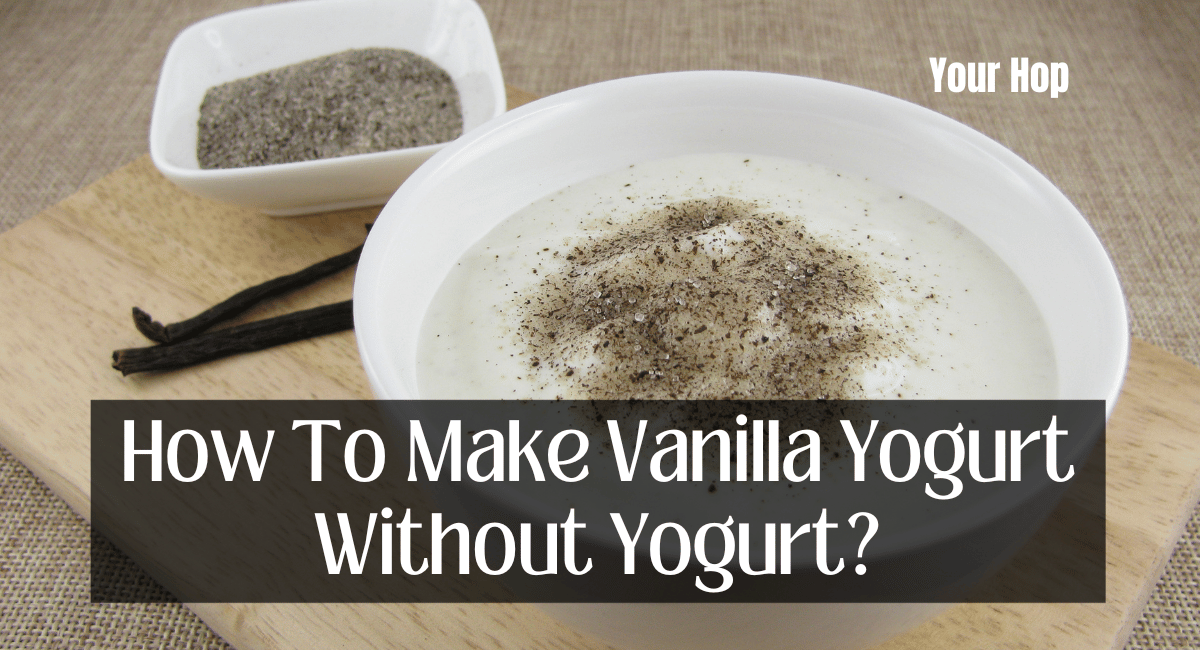A lot of people all over the world love yogurt because it’s soft and full of good nutrients. Nevertheless, what if you’re lactose intolerant, vegan, or simply out of yogurt? Never fear! This article will guide you through creating vanilla-flavored yogurt without actual yogurt. Yes, you read that correctly we will create a dairy-free and yogurt-free alternative that is equally tasty and nutritious. Prepare yourself for a culinary expedition!
Vanilla Yogurt Without Yogurt Recipe
Ingredients You’ll Need
Let’s assemble our ingredients before beginning the step-by-step procedure. To create vanilla yogurt without yogurt, you need the following ingredients:
1. Nondairy Milk
2 Cups of Nondairy Milk (Such as Almond, Soy, or Coconut Milk)
2. Thickening Agent
2 Tablespoons of Cornstarch
3. Sweetener
2-3 Tablespoons of Maple Syrup or Agave Nectar (Adjust to Taste)
4. Vanilla Flavor
1 Teaspoon of Pure Vanilla Extract
5. Probiotic Capsules
1-2 Probiotic Capsules (Optional, for Gut Health)
Step-By-Step Guide
Now that we have the necessary ingredients let’s begin preparing our delectable vanilla yogurt substitute:
Step 1: Prepare your nondairy milk
Pour the two glasses of dairy-free milk into a saucepan.
Heat the milk over low to medium heat until it’s tepid but not boiling.
Step2: Add Thickening Agent
Fill a small bowl with cold water and mix two tablespoons of cornstarch. This will make a smooth paste.
Whisk the cornstarch paste into the nondairy milk while it is still heated. Continue heating while continuously stirring the mixture until it thickens. Usually, this takes between 5 and 7 minutes.
Step3: Add Sugar
After the mixture has thickened, take it off the fire.
Combine 2 to 3 tablespoons of maple syrup or agave nectar to sweeten the yogurt substitute. Adjust the level of flavor to your taste.
Step 4: Vanilla Flavor Infusion
To make your yogurt taste great, add one teaspoon of pure vanilla extract and mix it in.
Step 5: Boost With Probiotics
If you wish to add probiotics for their health benefits, open one to two probiotic capsules and combine their contents with the yogurt.
Step 6: Allow Cooling
Attain room temperature with the mélange.
Step 7: Time For Fermentation
Transfer the mixture to a clean glass container or jar after it has chilled.
Using a lid or plastic wrap, cover the container.
Place the container in a toasty, dark location, such as an oven with the light off or a closet.
Ferment it for 8 to 12 hours or until it reaches the desired tartness and viscosity.
Step 8: Refrigerate And Enjoy
After fermentation, refrigerate your homemade vanilla yogurt for at least two to three hours to allow it to set.
Best Substitute Of Yogurt In Vanilla Yogurt
Here are some substitute of yogurt in vanilla yogurt :
1. Coconut Milk
Coconut milk has a delicious, thick texture that can be used as a substitute for yogurt. While the rich flavor of coconut will be predominant, it can be a wonderful addition to sweet and savory dishes. In baking and cooking, substitute coconut milk for yogurt 1:1.
2. Plant-Based Sour Milk
Plant-based milk can create a DIY sour milk similar to DIY buttermilk. Mix 1 cup of milk with one teaspoonful of lemon juice (or vinegar). Even with lemon juice, remember that most plant-based milks have a distinct flavor (almond and soy milk will have the most neutral flavors).
Additionally, plant-based milk contains an abundance of water. Consequently, they will likely alter the overall texture of your dish, making it less velvety than other substitutes. Begin with 12 to 34 servings of soured plant milk. If desirable, you may add up to a 1:1 substitution.
3. Soy Milk:
Soy milk is one of the most ubiquitous and adaptable nondairy milk substitutes. It has a neutral flavor and a creamy consistency, making it an excellent ingredient for yogurt. Replace almond milk in a recipe with the same amount of soy milk. Soy milk is also protein-rich, which can contribute to the viscosity and creaminess of yogurt.
4. Oat Milk:
The naturally sweet and mild flavor of oat milk has acquired popularity. It gives the yogurt a pleasant, faintly sweet flavor.
Use oat milk as the substrate for your yogurt, just as you would with almond milk. The yogurt’s overall texture is enhanced by its creamy consistency.
5. Cashew Milk:
Cashew milk has a mild hazelnut flavor and a creamy texture. Those who prefer a nuttier flavor in their yogurt will appreciate this option.
6. Rice Milk:
Compared to other nondairy milk, rice milk is thinner. Consider adding more tapioca starch or another thickening agent to obtain a consistency similar to almond milk-based yogurt. The milder flavor of rice milk enables the vanilla and probiotic flavors to stand out.
7. Hemp Milk:
Hemp milk is a healthy option that works well as a base for yogurt. It has an earthy and faintly nutty flavor. It can be used interchangeably with almond milk in equal proportions for dairy-free yogurt.
Thanks for visiting our site hope you like it and find it helpful.






